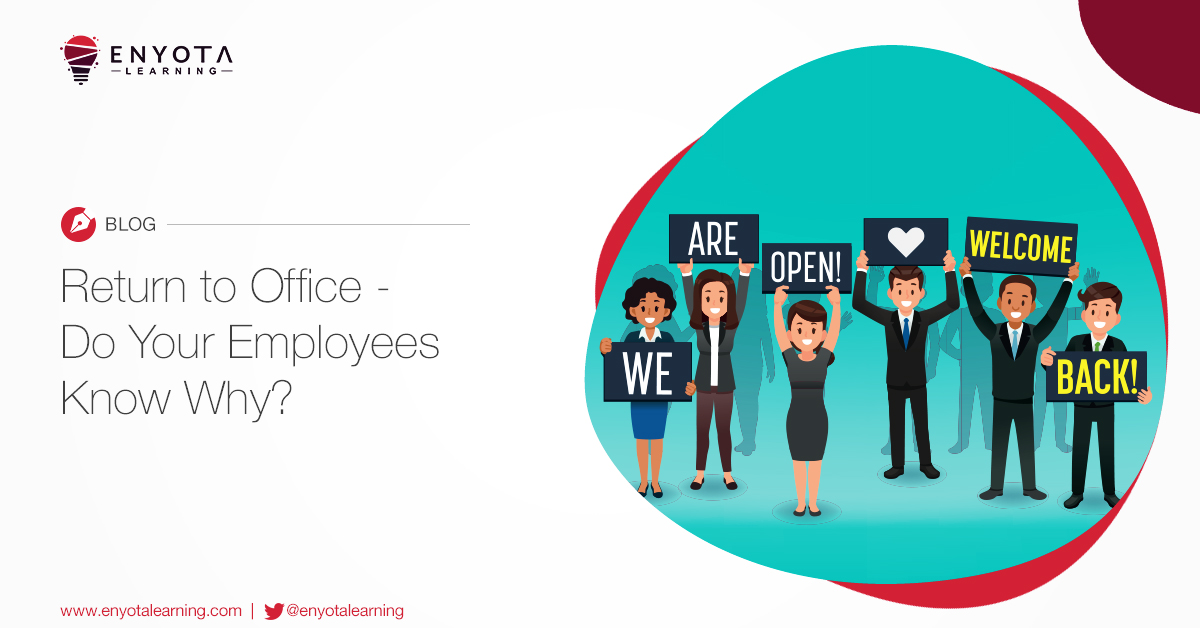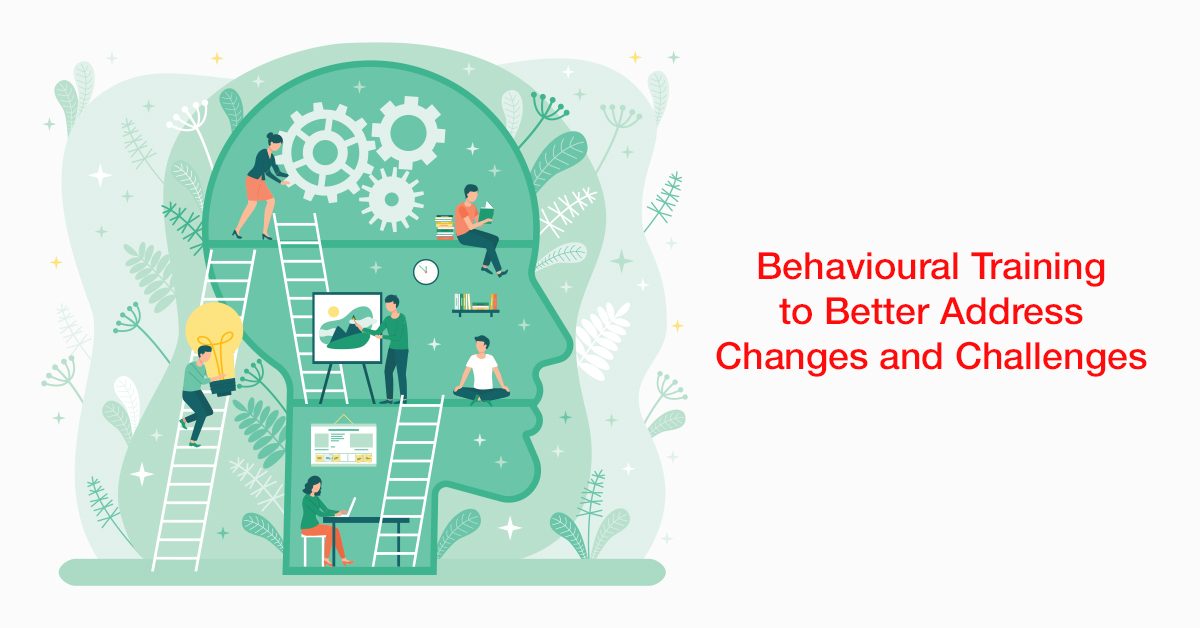
Return to Work
Phase-Wise Returning to Work
Accepting The New Normal
Companies across the USA are preparing to call their employees back to work. This is after a year and a half of working from home. In order to safely switch back to completely working from in-the-office, employers are required to reopen in accordance with the return to work guidelines laid down by the central and state government, right alongside the guidelines laid down by the CDC, OSHA, and EEOC.
We have put together a brief of the return to work guidelines by the CDC, OSHA, and EEOC. The idea was to compile the information available across the internet into one article. So that you can get a quick idea of what is to come. Moreover, the CDC, OSHA, and EEOC have made it pretty clear that they expect each employer to wholly comply with the prescribed guidelines while also ensuring their employees understand these guidelines.
And when it comes to making your employees understand the importance of these guidelines, and how non-compliance or ignorance can cost both the organization and the people responsible dearly, there is not better way than eLearning-based training.
So, without further delay, let us quickly jump into the heart of the topic.
Return to Work Guidelines Laid Down by the CDC, OSHA, and EEOC
CDC Guidelines
The guidelines as laid down by the CDC revolve primarily around every employee’s health and safety. These guidelines talk about the measures to reduce the possible contraction and spread of the virus within the office-space.
More importantly, the CDC guidelines are very important for the employees to know. This is because these measures have been prescribed to assist employees with self-diagnosing and subsequent measures to be taken. In the case that they do test positive. As a result, it is very important for employers to build some kind of training to get the guidelines across to every employee.
What do the CDC guidelines prescribe?
- If an employee thinks they have the virus or were around others who have tested positive, they are expected to self-isolate and remain at home.
- If a family member of the employee is at an increased risk of contracting the virus, the employee can look for accommodations provided by the employer w.r.t. to continue working remotely or the possibilities of modifying their job responsibilities.
- If an employee is leaving their child or family member in the care of any third-person, they are expected to view the following guidelines – Caring for children and caring for household members.
- Employees must reduce the time spent interacting with people.
- Minimize the number of interactions to only those that are very important, including the number of interactions during a break.
OSHA Guidelines
The Occupational Safety and Health Act 1979 w.r.t. the guidelines pertaining to the reopening of workplaces are more employer-centric. These guidelines are to assist employers with properly categorizing employees into the three categories of Lower Risk, Medium Risk, and Higher Risk.
In addition to categorizing employees based on the risk they face of contracting the virus, OSHA prescribes that all organizations must open their doors gradually or in 3 phases. The third phase being where the facility is operating at 100% capacity.
Here’s a quick look at the OSHA guidelines:
- Employers must develop an Infectious Disease Preparedness and Response Plan. This plan must work to protect the spread of the virus in the event of a breakout at the workplace.
- Employers are expected to deploy infection prevention measures like disinfectant stations, sanitizers, professional cleaning services, and provide clean running water. Moreover, employers must train their employees to effectively use the facilities they provide and promote the safety of workers.
- Develop, implement, and communicate about workplace flexibilities and protections. Employers must communicate clearly and precisely about the flexibilities offered to employees and how deserving employee can avail them.
- All employers are to reopen in three phases:
- Phase 1 – Partially returning workforce with a strong emphasis on social distancing. Prohibition of non-essential business travel. Limit the travel for essential work..
- Phase 2 – Additional staff can now return to work. Lifting travel restrictions on non-essential business interactions. However, following safety protocols will remain in play.
- Phase 3 – Companies can now operate at 100% staff force. However, organizations must continue to follow all safety protocols and adjust to the new normal.
EEOC Guidelines
The U.S Equal Employment Opportunity Commission enforces workplace anti-discrimination laws. Including the Americans with Disabilities Act (ADA) and the Rehabilitation Acts. These acts cover a set of rights. Including the right to refuse questions by an employer about one’s disabilities. As long as it does not impede one’s job role.
To ensure that ADA-covered employees receive their rights and also not wrongfully use the garb of ADA to avoid crucial COVID-19 related questions, the EEOC has strictly classified COVID-19 as not a disability and laid down some important guidelines.
The EEOC mandates that both the ADA and Rehabilitation Acts will continue to remain enforced as organizations reopen. Moreover, EEOC has prescribed new guidelines for employers to follow when dealing with ADA-covered employees. A PDF version of their guidelines is available here – Pandemic Preparedness in the Workplace and the Americans With Disabilities Act [PDF version]
However, here is a compressed look at what the EEOC guidelines state:
- Employers must keep the medical records and information of ADA-covered employees confidential. Employers are free to ask ADA-covered employees if they are experiencing any COVID-9 related symptoms.
- ADA requires returning employees to furnace a proof of statement from local authorities. The proof must indicate that they do not carry the virus at the time of re-joining.
- Covid-19 viral tests are permissible under the ADA.
- A manager may ask only one employee out of all employees to undergo screening and tests. However, that manager must have adequate reason to single out that one employee as opposed to asking all.
- Employers are allowed to ban an employee from entering the premises if they refuse to answer questions about their possibility of being COVID positive or if they refuse to take a temperature test.
- Employers can ask an employee about why they were not present at work.
- Employers do not have to wait to ask an employee about the possibility of them having the virus if they have just returned from travel.
- Discreetly store all medical information about an employee. Moreover, maintain these records independently of their personal information.
- Employers can disclose the name of positive patients to the authorities only.
- Managers obliged to keep the information of employees who test positive, private and only share it with the appropriate authority.
- Colleagues can report their peers to authorities if they suspect them to be infected based on the display of symptoms. Ada does not prevent this.
- Employers can inform the staff that their peer is working from home. However, they cannot disclose why the employee is working from home or even on a leave if applicable.
- Employers can screen applicants for COVID-19 upon making a conditional offer to join as long as they do the same for all employees entering at the same job level.
- Employers can delay the start date of an applicant who displays symptoms of the virus.
- Employers can withdraw the job offer of an applicant because they display symptoms of the virus and are unable to join within the specified period.
- Employers cannot postpone or withdraw the start date of people aged 65+ years and older or pregnant women because the CDC places these people within the bracket of people with a greater risk of contracting COVID. Instead, employers must discuss other solutions including offering the said individuals the opportunity to work from home or remotely.
- EEOC prescribes that employers may offer reasonable accommodations to assist employees who are at a higher risk as long as it does not put undue hardship on the employer.
- EEOC prescribes that people who may face mental issues with regards to the stress caused by the pandemic can also avail accommodations as long as it causes no undue hardship on the employers.
- Employers are to ensure that the fear of COVID-19 should not be misdirected at individuals based on their nationality, color, or creed.
- Employers must ensure no discrimination against Asians.
- In case of layoffs and furloughs, EEOC mandates that employees cannot be selected based on race, color, religion, national origin, sex, age, disability, protected genetic information, or in retaliation for protected EEO activity.
- Employers may require returning employees to wear PPE kits.
- The CDC identifies a number of medical conditions that might place individuals at “higher risk for severe illness” if they get COVID-19.
- The CDC has explained that individuals aged 65 and over are at higher risk. And therefore has encouraged employers to offer maximum flexibilities to this group.
- Pregnant employees have two federal employment discrimination laws that may trigger accommodation for employees based on pregnancy.
- Employers can stop unvaccinated employees from entering the workplace. Unless, the vaccine itself is a threat to the said person due to their disability.
The return to work guidelines stated here are in brief. We advise you to visit the official websites of CDC, OSHA, and EEOC for a more detailed understanding of the return to work guidelines. However, what we can say is that these guidelines are extensive, exhaustive, and complicated in some places. Hence, use eLearning to train employees and avoid the possibilities of any untoward incidents as a result of employee ignorance.
We are working with many major entities who are already preparing to reopen. We strongly urge all employers to explore eLearning as a viable medium to educate your returning employees as well as new joiners about the guidelines. In order to discuss the options available at your disposal, please get in touch at Contact@enyotalearning.com or fill this call-back form.




